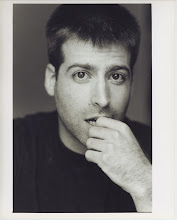Zarrilli, Phillip B. "Toward a Phenomenological Model of the Actor's Embodied Modes of Experience." Theatre Journal 56.4 (2004): 653-66.
In this Article, Zarrilli theorizes the performer’s body and experience using phenomenological observations and models; specifically Merleau-Ponty’s concept of the flesh and Drew Leder’s ideas from his book The Absent Body. His analysis follows various experience of the body in life and performance and he arrives at four different “bodies” that he calls: “flesh”, “blood”, “breath” and “appearance.” The “flesh-body,” also defined as the ecstatic body, is that from which we live in the world and experience it. It is our habitual sensorimotor being that includes our exteroception and prorioception, and that is (in Leder’s words) absent to itself. It is the surface body that is outwards-directed. The “blood-body” is the interoceptive body of our inner organs. It is “the deep, inner, visceral body of corporeal depths which in physical terms includes the mass of internal organs and processes enveloped by the body surface, such as digestion and sensations such as hunger.” (659-60) Like the surface body of “flesh” the recessive body is also defined by disappearance. “Our everyday experience of the lived body is a constant intermingling and exchange of "flesh and blood."” (660)
The bodies of “breath and appearance” are both “non-ordinary, extra-daily” bodies. The “breath-body” is the “aesthetic inner bodymind.” (661) It is the subtle embodied awareness—developed through various psychophysical techniques such as yoga or martial arts—to one’s bodymind as a dialectic whole. Breath, as the interoceptive process that is the closest to the outer surface of the body, creates, both figuratively and (in many techniques) literally, a connection and constant shift from inner to outer worlds. This body can be cultivated by training and be used in practice. The fourth body, “appearance”, is the aesthetic outer body that is available for the spectator’s gaze. This is a fictive body in which the actor’s perception is attuned to absent things (the “as if”) and is presented outwards. In both of these bodies, there is a constant shifting between the recessive body and the ecstatic body. “In the model proposed here, the chiasmic nature of experience as a braiding and intertwining is more complexly elaborated in the modulation of the four modes of bodily experience described above—the ecstatic surface, the depth/visceral recessive, the subtle inner bodies, and the fictive body of the actor's score.” (665)

No comments:
Post a Comment